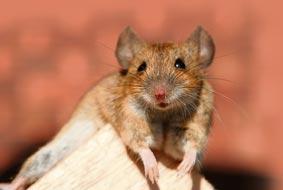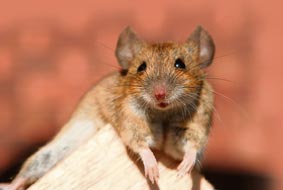Noisy as a mouse

Éanna Ní Lamhna is kept awake by the scamperings of her furry visitors, but it's needs must for these little fellasWhoever devised the expression “as quiet as a mouse” must have been totally deaf. I have lain awake every night of the last week listening to mice scampering to and fro behind the partition walls in my 1930s terraced house. Winter has brought them indoors and they go about their nocturnal duties in hob-nailed boots, with no regard for the owners of the houses they have taken possession of.
A close observation of these invaders will reveal the disconcerting fact that two different species of mouse are involved. There's the house mouse, a lean, mean-looking mouse that runs around the edges of the room and skirts around the furniture as it doesn't like crossing open areas where it will be more vulnerable to predation. It comes indoors in cold weather when food is scarce outside. The house mouse can survive more than two years here in this favourable habitat, away from enemies such as barn owls, kestrels, stoats and foxes. It can breed indoors every eight weeks with a litter of up to 10 babies. If you don't nab that mother house mouse, she can give birth to 120 babies in your house before she dies of exhaustion!
On the other hand, your visitor may have large eyes, large ears, a long tail and chestnut brown fur – as opposed to the greasy coat and grey brown fur of the house mouse. If it has, then you are in the presence of a wood mouse or, as it is sometimes called, a field mouse. These mice, as their name would indicate – are denisens of fields, woodlands and hedgerows. They prefer to live outdoors, far away from man and his traps. They are quite shy and timid and leap into the air from their large hind feet when frightened. They do sometimes come into our houses during cold spells when food is scarce because such wonderful stores of free food are very hard to resist.
Mice will eat almost anything in our houses. As well as the obvious such as Cornflakes, chocolate and the fat on the uncleaned frying pan, they will eat plastic, soap, rubber, wood and glue. They need to gnaw on hard surfaces to abrade their front teeth, which grow continually during their lives and would burst through their lips if they did not continually wear them down.
So as you lie there in bed listening to your winter visitors making a terrible racket, think how you would feel if your front teeth grew endlessly and relentlessly and threatened to spear your lower lip. Then get out of bed, find a good old-fashioned wooden mousetrap and bait it with chocolate, which you melt on to the sharp side (mice much prefer chocolate to cheese, no matter what Walt Disney may have us believe). Then, having placed it strategically, go back to bed and wait for the satisfying snap which will indicate that the “wee sleekit, cowrin, tim'rous beastie”, as Robbie Burns would have it, is no more.
